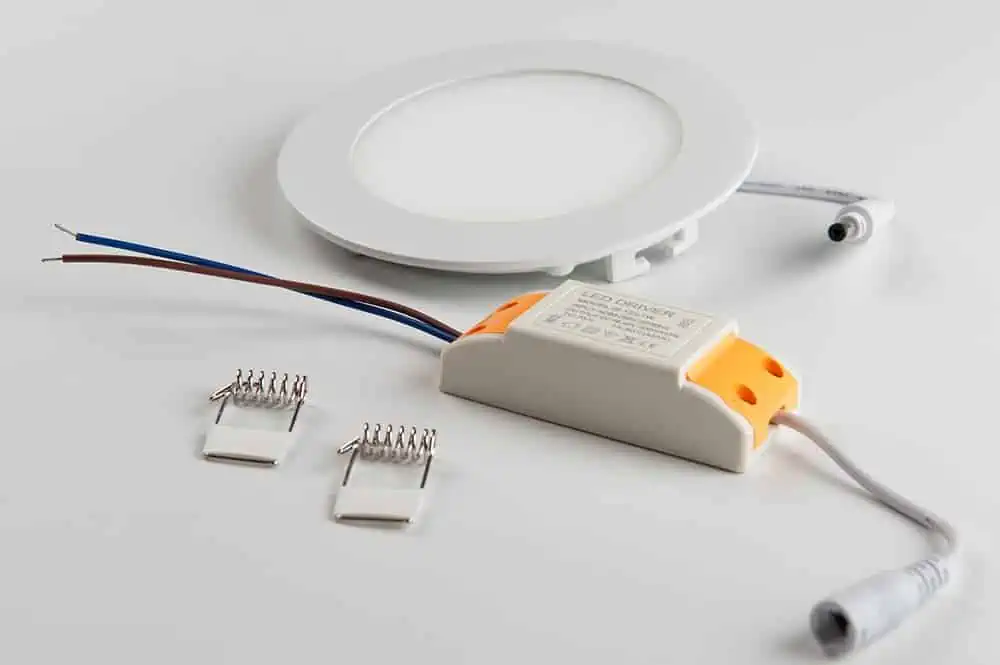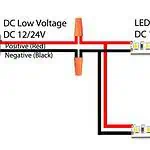Have you ever looked at the small, glowing LED light and wondered how it works? Why does it have such a consistent brightness and not burn out quickly? Why do some LEDs shine brighter while others dim faster? All of these questions come down to the type of LED driver used.
LEDs (Light Emitting Diodes) are a type of lighting technology that is efficient, durable, and long-lasting. They require an LED driver to function correctly and to their full potential. This post will delve into the world of LED drivers, specifically the Constant Current and Constant Voltage LED drivers, and help you understand which one might be right for your lighting needs.
If you’re curious about LEDs or have a project involving LED lighting, read on to understand these crucial components comprehensively.
I. Introduction
Brief Introduction to LEDs (Light-Emitting Diodes)
Light Emitting Diodes or LEDs are semiconductor devices that emit light when an electric current passes through them. They’re well-known for their efficiency and longevity, making them popular for various lighting applications, from home lighting to traffic signals and even digital screens.
Explanation of the Need for LED Drivers
While efficient and versatile, LEDs operate differently from traditional incandescent or fluorescent bulbs. They require specific current and voltage conditions to function effectively, which an LED driver facilitates.
Without a driver, an LED may become too hot and unstable, leading to sub-optimal performance, uneven brightness, or even burnout. Therefore, an LED driver is a critical part of any LED system.
II. Understanding LED Drivers
Definition of an LED driver
An LED driver is a self-contained power supply that regulates the power required for an LED or a string (array) of LEDs. It ensures that the LEDs function under their specified conditions.
Role and Importance of LED Drivers in LED Lighting Systems
LED drivers play a vital role in LED lighting systems. They maintain the balance of current and voltage, which is crucial to prevent LEDs from thermal damage and to ensure they operate at their peak efficiency.
Without a suitable LED driver, LEDs are prone to fluctuations in power supply, leading to inconsistent brightness, color shifts, flickering, and potential damage. Thus, a good LED driver is integral to the longevity and performance of any LED lighting system.
III. Constant Current LED Drivers

Explanation of Constant Current LED Drivers
A Constant Current LED driver regulates the output current, keeping it consistent regardless of input voltage or load changes. This feature is crucial for powering LEDs since they require a constant current to function correctly.
How Constant Current LED Drivers Work
The Constant Current driver adjusts the voltage across the output to maintain a constant current flow. If the resistance across the LED increases due to temperature changes or other factors, the driver reduces the output voltage to keep the current constant.
The Concept of Thermal Runaway and How Constant Current LED Drivers Prevent It
Thermal runaway is a potential issue with LEDs. It occurs when an increase in temperature leads to an increase in current, causing the LED to heat up even more, leading to a destructive cycle that can ultimately damage the LED.
Constant Current drivers prevent this by maintaining a stable current despite temperature changes, effectively mitigating the risk of thermal runaway.
Benefits of Using Constant Current LED Drivers
Constant Current drivers ensure a consistent brightness across all LEDs connected in series, enhancing overall visual uniformity. They are also effective in avoiding LED burnout or thermal runaway.
Potential Drawbacks or Limitations
Despite their benefits, Constant Current drivers might have limitations. For instance, they require precise matching with the LED’s current requirements and are generally more expensive than Constant Voltage drivers.
IV. Constant Voltage LED Drivers

Explanation of Constant Voltage LED Drivers
A Constant Voltage LED driver maintains a fixed voltage regardless of the load’s current draw. This is often used for LED systems already equipped with resistors or on-board current control, like LED strip lights.
How Constant Voltage LED Drivers Work
A Constant Voltage driver maintains the same voltage across its output, regardless of the current load. This is particularly useful when powering multiple LEDs connected in parallel.
Benefits of Using Constant Voltage LED Drivers
Constant Voltage drivers are familiar to design and installation engineers, which can simplify the setup process. They can potentially lower the cost in larger-scale applications due to their straightforward design.
Potential Drawbacks or Limitations
One major limitation of Constant Voltage drivers is their dependence on additional components for current control in each LED unit. This can make the system more complex and potentially less reliable in the long run.
Examples of Applications
Typical applications for Constant Voltage drivers include under-cabinet lights and LED flex strip applications where multiple LEDs are connected in parallel.
V. Comparison between Constant Current and Constant Voltage LED Drivers
The following table illustrates the key differences between Constant Current and Constant Voltage LED drivers:
| Constant Current | Constant Voltage | |
| Output | Constant Current | Constant Voltage |
| Prevents Thermal Runaway | Yes | No |
| Consistent Brightness | Yes | Depends on Additional Current Control |
| Use Case | High Power LEDs | LED strips, bars, etc. |
The choice between the two depends on the specific application. Constant Current drivers are often preferable for high-power LEDs, where thermal management is vital. On the other hand, Constant Voltage drivers are used for LED products with multiple LEDs assembled together, like LED rope lights, LED strips, and LED bars.
VI. Choosing the Right LED Driver
Factors to Consider When Choosing Between Constant Current and Constant Voltage LED Drivers
Choosing the right LED driver depends on various factors, including the specific LED or array’s voltage requirements, the number and arrangement of LEDs in the system (series or parallel), and the power conditions of your environment.
Tips for Selecting the Right LED Driver for Specific Applications
A Constant Voltage driver is needed if the LED or array specifies a specific voltage. However, if you’re working with high-powered LEDs, a Constant Current driver would be beneficial to prevent thermal runaway and ensure consistent brightness.
Refer to the manufacturer’s specifications and consult a lighting professional if you need clarification.
VII. FAQs
An LED, or Light Emitting Diode, is a semiconductor device that emits light when an electrical current passes through it. They are known for their efficiency and longevity.
LEDs require drivers to supply them with a specific current and voltage for optimal operation. Without a driver, an LED might become too hot, unstable, and potentially burn out.
A Constant Current LED driver is a device that regulates the output current to the LEDs, keeping it constant regardless of changes in input voltage or load.
A Constant Voltage LED driver is a device that maintains a fixed voltage no matter the current draw of the load. These are typically used for LED systems already equipped with current controlling components.
Thermal runaway occurs when an increase in temperature leads to an increase in current, causing the LED to heat up further, creating a cycle that can damage the LED. Constant Current drivers prevent this by maintaining a stable current, regardless of temperature changes.
Constant Current LED drivers ensure consistent brightness across all LEDs connected in series and effectively avoid LED burnout or thermal runaway.
Constant Current LED drivers are preferable for high-power LEDs where thermal management is vital.
Constant Voltage drivers are typically used for LED products with multiple LEDs assembled together, like LED rope lights, LED strips, and LED bars.
The choice between the two depends on various factors, including the voltage requirements of the specific LED or array, the number and arrangement of LEDs in the system, and the power conditions of your environment. Always refer to the manufacturer’s specifications and consider consulting with a lighting professional.

VIII. Conclusion
LED drivers, whether Constant Current or Constant Voltage, play an essential role in maintaining the performance and longevity of your LEDs. While both have their benefits and limitations, your choice should be based on the specific requirements of your LED system.






